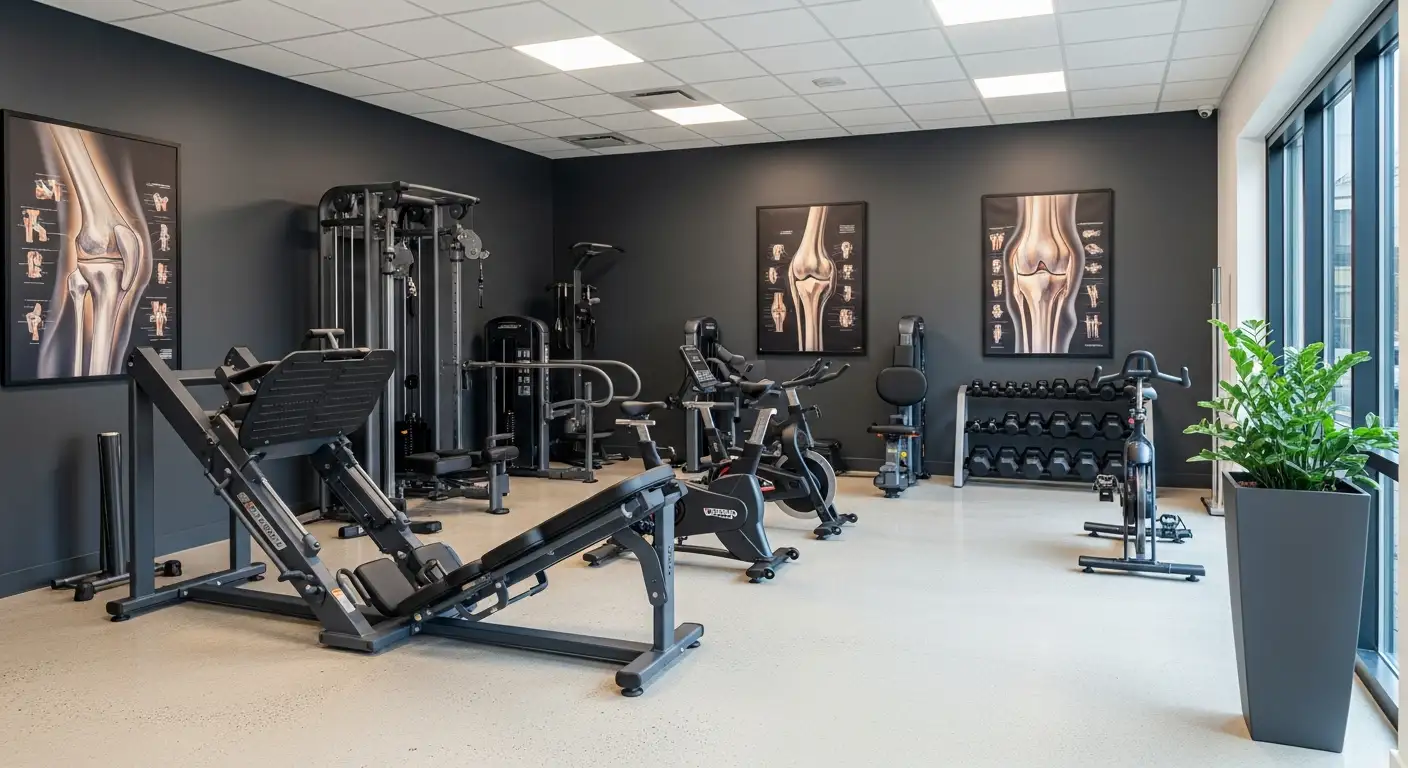Understanding Knee Pain
In order to address knee pain effectively, the first step is to understand its root causes and how certain activities, like walking downhill, can exacerbate the symptoms.
Causes of Knee Pain
Knee pain can stem from a variety of sources, including injury, overuse, and underlying medical conditions such as arthritis. It may also be influenced by inefficiencies in other body regions such as the back, ankle, and foot. For example, nerve pain from the back can sometimes manifest as knee pain, highlighting the concept of regional interdependence in pain patterns [1].

Furthermore, walking downhill can lead to knee pain due to the increased force applied to the knee joint. This activity requires adequate strength and control from the quadriceps muscles as they contract eccentrically to control the movement, which can result in patellar tendonitis, a common reason for pain while hiking downhill [1].
Knee Pain and Walking Downhill
Walking downhill may exacerbate knee pain due to the increased stress placed on the leg muscles and joints as they resist the pull of gravity with each step. This activity can also lead to muscle fatigue, which may further contribute to knee pain, emphasizing the importance of gradually building tolerance and strength in the leg muscles.
There are several strategies to manage and prevent knee pain when walking downhill. These include engaging the core muscles and maintaining a slight bend in the knees, which can help reduce the strain on the knees and lower back, potentially alleviating pain.
Using assistive equipment like trekking poles can help distribute some of the weight taken by the knees, reducing pain and improving stability when walking downhill. Similarly, knee braces can provide temporary relief from knee pain during hiking by improving stability around the knee and offloading pressure on the joint. However, it is important to use knee braces judiciously, as they may give a false sense of permanent pain relief and can lead to muscle weakness and dependency on the brace for stability [1].
Proper footwear with adequate cushioning and traction is also essential for reducing knee pain when walking downhill, as it can absorb some of the impact and prevent slipping [2].
By understanding the causes of knee pain and the specific challenges posed by walking downhill, you can take proactive steps to manage the symptoms effectively and continue to enjoy your outdoor adventures with minimal discomfort.
Anatomy and Biomechanics of the Knee
To fully comprehend the reasons behind knee pain when walking downhill, it is crucial to understand the structure of the knee joint and the forces exerted on it during such activities. This understanding can provide insight into the prevention and management of knee pain.
Knee Joint Structure
The knee is a complex joint that plays a crucial role in movements such as walking, running, and jumping. It is made up of bones, cartilage, ligaments, and tendons. The primary bones in the knee joint are the femur (thigh bone), tibia (shin bone), and patella (kneecap). These bones are cushioned by cartilage, a flexible connective tissue that prevents the bones from rubbing against each other.
Ligaments are fibrous tissues that connect bones to other bones, providing stability to the joint. In the knee, there are four main ligaments: the anterior cruciate ligament (ACL), posterior cruciate ligament (PCL), medial collateral ligament (MCL), and lateral collateral ligament (LCL). Tendons, on the other hand, connect muscles to bones, facilitating movement.
The primary muscles involved in the movement of the knee joint are the quadriceps (front of the thigh) and the hamstrings (back of the thigh). These muscle groups work together to extend and flex the knee, respectively.
Forces on the Knee While Walking Downhill
Walking downhill increases the force on the knee joint significantly. According to Mountain State Orthopedic Associates, the force can be up to four times the body weight. This increased force requires adequate strength and control from the surrounding muscles, particularly the quadriceps, as they contract eccentrically to control the movement.
This eccentric contraction, along with the increased force, can lead to knee pain and potentially cause conditions such as patellar tendonitis. In addition, inefficiencies in other body regions, such as the back, ankle, and foot, can exacerbate the strain on the knee. For instance, nerve pain from the back can radiate to the knee, and instability in the ankle can force the knee to work harder, contributing to pain.
A study by the University of Salzburg cited by [1].
Common Conditions Causing Knee Pain
While there can be various causes behind the discomfort experienced in the knee, certain conditions are more commonly associated with knee pain when walking downhill. These include Patellofemoral Pain Syndrome, Patellar Tendonitis, and Iliotibial Band Syndrome.
Patellofemoral Pain Syndrome
Patellofemoral Pain Syndrome (PFPS), also known as runner's knee, is a condition that can cause pain under the kneecap, particularly when walking downstairs or downhill. This is due to the increased pressure and stress on the knee joint during these activities. The discomfort in the knee caused by PFPS can be exacerbated when navigating downhill terrains, making it a common reason for knee pain when walking downhill.
Patellar Tendonitis
Another possible cause of knee pain when walking downhill is Patellar Tendonitis, an overuse injury that involves inflammation of the tendon connecting the kneecap to the shinbone. This condition can lead to pain when putting stress on the tendon, such as during downhill walking. The disproportionate pressure on the knee joint and the patellar tendon, particularly when walking downhill, can aggravate the symptoms of Patellar Tendonitis.
Iliotibial Band Syndrome
In some cases, knee pain when walking downhill can be attributed to Iliotibial Band Syndrome. This syndrome involves the inflammation of the iliotibial band, a band of tissue that runs along the outside of the thigh from the hip to the shin. Downhill walking can aggravate this condition and lead to pain on the outside of the knee. The increased load on the knee joint, particularly the lateral aspect, during downhill walking can exacerbate the symptoms of Iliotibial Band Syndrome, leading to an intensification of pain and discomfort.
These are just a few of the conditions that could potentially be causing knee pain when walking downhill. It is important to note that other conditions, such as osteoarthritis, tendinitis, meniscal tear among others, could also be potential causes. If you're experiencing persistent knee pain, especially when walking downhill, it's recommended to consult a medical professional for a proper diagnosis and appropriate treatment strategies.
Prevention and Management Strategies
While knee pain when walking downhill can be a frustrating challenge, certain strategies can help manage and prevent this discomfort. These strategies include strengthening exercises, the use of assistive equipment, and the importance of proper footwear.
Strengthening Exercises
Strengthening primary muscle groups like the gluteus and quadriceps is crucial to prevent knee pain during downhill walking. These muscles help stabilize the knee, adapt to uneven terrain, and tolerate the forces experienced while walking downhill [1].
An exercise regimen that includes step-ups, lunges, and squats can specifically target the quadriceps, helping to support knee joints during downhill walking.
Exercises such as quad sets, straight-leg raises, and hamstring curls can also help reduce knee pain when walking downhill by improving the strength and stability of the muscles around the knee joint [4].
Use of Assistive Equipment
Using trekking poles can help distribute some of the weight taken by the knees, reducing pain and improving stability when walking downhill.
Walking sticks, compression knee braces, or other assistive equipment can provide support, distribute stress, and reduce pain. However, it is essential to use such equipment judiciously, as over-reliance on knee braces can lead to muscle weakness and decreased coordination in the long term.
Importance of Proper Footwear
Proper footwear with adequate cushioning and traction is essential for reducing knee pain when walking downhill. It can absorb some of the impact and prevent slipping.
Taking smaller steps, slowing the pace, and using equipment like walking sticks can also help prevent knee pain while hiking downhill. These strategies can reduce the stress on the knee joint and offer more stability, especially when dealing with existing knee pain.
In summary, maintaining strong leg muscles, using assistive equipment appropriately, and wearing the right footwear can significantly reduce knee pain when walking downhill. These strategies can help individuals enjoy a more comfortable and pain-free hiking or walking experience.
Seeking Medical Help
While implementing prevention and management strategies can help alleviate knee pain when walking downhill, it's essential to know when to seek medical help and understand the potential diagnosis and treatment options.
When to Consult a Doctor
Medical advice for knee pain when walking downhill should be sought if the pain persists for more than a week, especially if the pain is severe or limits mobility. Prompt medical evaluation can help determine the underlying cause and start appropriate treatment to alleviate discomfort and prevent further damage. It's crucial not to ignore persistent knee pain as it can lead to potential long-term consequences if left untreated.
Moreover, it's essential to consult a doctor if the knee pain is associated with swelling, redness, warmth, or tenderness around the joint [5].
Diagnosis and Treatment Options
The diagnosis of the underlying cause of knee pain when walking downhill may involve a physical examination, imaging tests like X-rays or MRIs, or in some cases, arthroscopy for more detailed visualization [5].
Knee pain could be due to various factors such as osteoarthritis, tendinitis, meniscal tear, patellar tendinitis, or iliotibial band syndrome, among others [5].
Treatment options for knee pain when walking downhill may vary depending on the cause and severity of the condition. Some commonly recommended treatments include medications, physical therapy, and injections. Use of orthotics or knee braces may also be suggested to provide support and relieve pressure on the knee. In severe cases, surgical options such as arthroscopy, partial knee replacement, or knee joint replacement might be considered [5].
However, every individual is unique, and what works best for one person may not be the best solution for another. Thus, communication with your healthcare provider is key. Discussing your symptoms, lifestyle, and goals will enable them to devise a treatment plan tailored to your specific needs and preferences.
References
[1]: https://www.jacorehab.com/blog/knee-pain-hiking-downhill/
[2]: https://www.verywellfit.com/how-to-walk-downhill-3435572
[3]: https://pubmed.ncbi.nlm.nih.gov/25365450/
[4]: https://www.webmd.com/pain-management/knee-pain/knee-pain-causes
[5]: https://www.mayoclinic.org/symptoms/knee-pain/basics/when-to-see-doctor/sym-20050688
[6]: https://www.backpacker.com/skills/backpacking-fitness/knock-out-knee-pain-with-these-3-exercises/
[7]: https://mountainstateorthopedic.com/how-long-should-you-wait-to-see-a-doctor-for-knee-pain/





